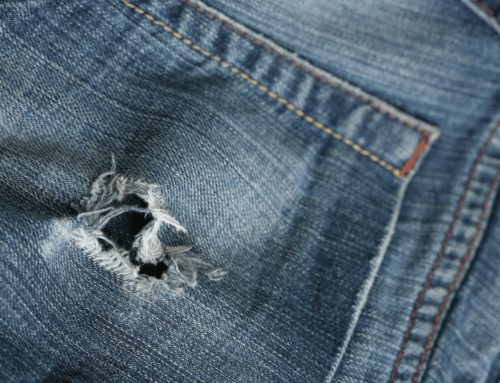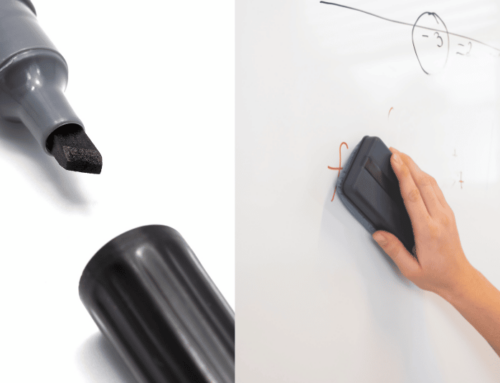How to Get Paint Out of Clothes?

In this article, you will learn how to get paint out of your clothes. We will explore different methods and techniques that can help you remove paint stains successfully. Whether it’s oil-based or water-based paint, we’ve got you covered. By the end of this article, you’ll have a clear understanding of the steps you need to take to salvage your favorite garments. So let’s get started and rescue those clothes!
Understanding the Types of Paint Stains
Paint stains on clothes can be stubborn and difficult to remove, but with the right techniques and products, you can successfully salvage your favorite garments. Before diving into the various methods of removing paint stains, it is important to understand the different types of paint stains that you may encounter.
Acrylic Paint Stains
Acrylic paint is a popular choice among artists and craft enthusiasts due to its vibrant colors and quick-drying properties. However, if it accidentally gets on your clothes, it can be quite challenging to remove. Acrylic paint is water-based when wet, but once it dries, it becomes water-resistant.
Oil-based Paint Stains
Oil-based paint is commonly used for larger projects, such as repainting walls or furniture. It is known for its durability and resistance to wear and tear. However, oil-based paint stains can be particularly stubborn and require more intensive cleaning methods to remove.
Water-based Paint Stains
Water-based paint stains, also known as latex paint stains, are easier to remove compared to acrylic or oil-based paint stains. Water-based paint is commonly used for interior walls, as it is quick-drying and has low levels of volatile organic compounds (VOCs). If you accidentally come into contact with water-based paint and it gets on your clothes, you can breathe a sigh of relief as these stains can be successfully treated.
Pre-Treating the Stained Area
Before attempting to remove the paint stains from your clothes, it is important to pre-treat the affected area properly. This will help to minimize the potential damage and increase the chances of successful stain removal.
Drying the Fresh Paint Stain
If the paint on your clothes is still wet, you should first try to dry the affected area as quickly as possible. Use a clean cloth or paper towel to gently blot and absorb any excess paint. Be cautious not to rub the paint as it may spread and further embed itself into the fabric.
Scraping off Excess Paint
For dried or thick paint stains, you can carefully scrape off any excess paint using a dull knife or spoon. Be gentle to avoid damaging the fabric, and keep in mind that this method is most effective for removing oil-based or acrylic paint stains.
Blotting the Stain
After removing any excess paint, you can lightly blot the stained area with a clean cloth or towel. This will help to absorb any remaining paint and prevent it from spreading further. Avoid rubbing the stain, as this can push the paint deeper into the fabric and make it more difficult to remove.
Choosing the Right Removal Method
The paint removal method you choose will depend on the type of paint stain you are dealing with. Here are some recommended methods for each type of paint stain:
For Acrylic Paint Stains
To remove acrylic paint stains, you have a few options. One effective method is to use rubbing alcohol. Dampen a clean cloth with rubbing alcohol and gently dab the stained area, allowing the alcohol to penetrate the fabric. Continue blotting until the paint begins to lift. Rinse the garment with warm water and repeat if necessary. Another option is to apply a mixture of dish soap and warm water to the stain, gently rubbing the fabric together to create a lather. Rinse with warm water and repeat if needed. Lastly, you can use acetone, which is commonly found in nail polish removers. Apply a small amount to a clean cloth and gently dab the stain, rinsing with warm water afterwards.
For Oil-based Paint Stains
Oil-based paint stains require a more intensive approach. One effective method is to use mineral spirits. Dampen a clean cloth with mineral spirits and gently dab the stained area, allowing the spirits to penetrate the fabric. Continue blotting until the paint starts to lift. Rinse the garment with warm water and repeat if necessary. Another option is to apply a paint remover specifically designed for oil-based paint stains. Follow the instructions on the product and rinse the garment thoroughly after use. If you prefer a non-toxic method, you can create a mixture of dish soap and warm water and apply it to the stain. Gently rub the fabric together to create a lather, rinse with warm water, and repeat if needed.
For Water-based Paint Stains
Water-based paint stains are relatively easier to remove compared to other types of paint stains. Begin by rinsing the stained area with warm water to loosen the paint. Apply a small amount of liquid soap or dish soap directly to the stain and gently rub the fabric together to create a lather. Rinse with warm water and repeat if necessary. Another option is to create a solution of vinegar and water. Mix equal parts of vinegar and water in a spray bottle and spray directly onto the stain. Allow the solution to sit for a few minutes before rinsing with warm water. If the stain persists, you can try using hydrogen peroxide. Apply a small amount directly to the stain, let it sit for a few minutes, and rinse with warm water.
Removing Acrylic Paint Stains
Acrylic paint stains can be particularly stubborn, but with the right techniques, you can successfully remove them. Here are a few methods you can try:
Using Rubbing Alcohol
Rubbing alcohol is an effective solvent for removing acrylic paint stains. Apply a small amount of rubbing alcohol to a clean cloth and gently dab the stain, allowing the alcohol to penetrate the fabric. Continue blotting until the paint begins to lift. Rinse the garment with warm water and repeat the process if needed.
Applying Dish Soap and Warm Water
Creating a mixture of dish soap and warm water can also help remove acrylic paint stains. Apply a small amount of the mixture directly to the stained area and gently rub the fabric together to create a lather. Rinse with warm water and repeat the process if necessary.
Using Acetone
Another option for removing acrylic paint stains is to use acetone. Acetone is commonly found in nail polish removers and acts as a solvent for acrylic paint. Apply a small amount of acetone to a clean cloth and gently dab the stain, being careful not to oversaturate the fabric. Rinse the garment with warm water after the paint starts to lift.
Removing Oil-based Paint Stains
Oil-based paint stains require a different approach due to their stubborn nature. Here are a few methods you can try:
Using Mineral Spirits
Mineral spirits are effective in removing oil-based paint stains. Dampen a clean cloth with mineral spirits and gently dab the stained area, allowing the spirits to penetrate the fabric. Continue blotting until the paint starts to lift. Rinse the garment with warm water and repeat the process if necessary.
Applying Paint Removers
There are various paint removers available specifically designed for oil-based paint stains. Follow the instructions on the product and apply it directly to the stained area. Allow it to sit for the recommended time and rinse the garment thoroughly with warm water.
Using Dish Soap and Warm Water
If you prefer a non-toxic method, you can create a mixture of dish soap and warm water to remove oil-based paint stains. Apply a small amount of the mixture directly to the stain and gently rub the fabric together to create a lather. Rinse with warm water and repeat the process if needed.
Removing Water-based Paint Stains
Water-based paint stains are generally easier to remove compared to other types of paint stains. Here are a few methods you can try:
Using Warm Water and Soap
To remove water-based paint stains, begin by rinsing the stained area with warm water to loosen the paint. Apply a small amount of liquid soap or dish soap directly to the stain and gently rub the fabric together to create a lather. Rinse with warm water and repeat the process if necessary.
Applying Vinegar and Water Solution
Another effective method for removing water-based paint stains is to create a solution of vinegar and water. Mix equal parts of vinegar and water in a spray bottle and spray directly onto the stain. Allow the solution to sit for a few minutes before rinsing with warm water.
Using Hydrogen Peroxide
If the water-based paint stain persists, you can try using hydrogen peroxide. Apply a small amount of hydrogen peroxide directly to the stain and let it sit for a few minutes. Rinse with warm water and repeat the process if needed.
Treating Stubborn Stains
Some paint stains may be more stubborn and require additional treatment methods. Here are a few options you can try:
Applying Stain Remover
For particularly stubborn paint stains, you can apply a stain remover directly to the affected area. Follow the instructions on the product and allow it to sit for the recommended time. Rinse the garment thoroughly with warm water after use.
Using Bleach on White Clothing
If you have a white garment with a stubborn paint stain, you can try using bleach to remove the stain. Dilute bleach in water according to the product’s instructions and soak the garment for the recommended time. Rinse the garment thoroughly with warm water after use.
Seeking Professional Help
If all else fails, or if you are dealing with a delicate or valuable garment, it is best to seek professional help. Take your stained clothing to a professional dry cleaner who specializes in stain removal. They have the knowledge and specialized equipment to tackle even the toughest paint stains.
Washing and Drying the Treated Clothing
After successfully removing the paint stains from your clothes, it is important to properly wash and dry the treated garments. Here are a few steps you can follow:
Rinsing the Stain
Thoroughly rinse the treated area with warm water to remove any residue from the cleaning products used. This will help to prevent any potential damage or discoloration during the washing process.
Washing as Per Clothing Labels
Check the clothing label for specific washing instructions and follow them accordingly. Use a gentle detergent and wash the garment on a suitable cycle for the fabric type. Avoid using hot water, as it can set any remaining paint stains or damage the fabric.
Drying the Garment
Once the garment is clean, choose the appropriate drying method based on the fabric type. Air drying is generally recommended, as it reduces the risk of shrinkage or damage caused by heat. Hang the garment on a clothesline or lay it flat on a clean towel to dry completely.
Tips and Precautions
When dealing with paint stains on clothes, it is important to keep in mind a few tips and precautions to ensure successful stain removal and avoid further damage:
Act Quickly
The sooner you can treat a paint stain, the easier it will be to remove it. As soon as you notice a paint stain on your clothes, take immediate action to minimize the stain’s setting and increase the chances of successful removal.
Avoid Heat
Avoid using heat during the paint stain removal process, as it can set the stain and make it more difficult to remove. This includes using hot water, dryers, or ironing the stained area.
Testing on Unseen Areas
Before applying any cleaning products or methods to the stained area, it is advisable to test them on an unseen area of the garment first. This will help you determine if the product or method will cause any damage or discoloration to the fabric.
Conclusion
With the right techniques and products, you can successfully remove paint stains from your clothes. Whether you are dealing with acrylic, oil-based, or water-based paint stains, it is important to act quickly, choose the appropriate removal method, and take proper precautions to avoid further damage. By following the steps outlined in this article, you can achieve paint-free clothes and keep your favorite garments looking their best.
Remember, patience and persistence are key when it comes to removing paint stains. Don’t get discouraged if the stain doesn’t come out immediately. Keep trying different methods until you achieve the desired results. With a little effort and the right techniques, your clothes can be restored to their original, paint-free state.


